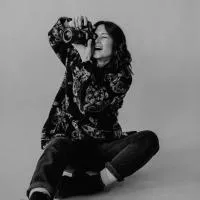Contents
I’m answering your questions about photography websites, business, marketing, SEO and more.
You can ask me anything. I’ll try to answer within 24 hours, and the most useful questions get featured here on the newsletter too. Need any help with your website? Don’t hesitate to write, I’m all ears.
Thanks to Anna, Jewel, Glenda & Dan for these topics.
Check out my answers below, and jump in with your own thoughts by sending me a message or leaving a comment below.

“Do you have any articles about how to exclude your own visits from Google Analytics? I’ve tried excluding my IP address but it hasn’t worked.”
Your IP address is bound to changes every few hours (or days), depends on your network connection provider. So it’s not a reliable way.
The simplest way it to simply opt out of being tracked by Google Analytics altogether. Google actually provides extensions to do this, for all browsers, here: Google Analytics Opt-out Browser Add-on
More advanced blocking methods can be found here: 5 ways to exclude your own visits from Google Analytics
“As a web designer who builds photography sites, do you build for retina screens or for SEO? Both? Compromise?”
Full question:
“Meaning, designers are told to double the image size in order to create a better resolution image.
The problem I see with doing this is that it is moot. On a responsive site, the platform will render the image to the correct width and height, so you are adding to the load time and not really making the image “better” to the user. It also means the file is fatter than it needs to be.
It seems like a double-edged sword. You want great visuals to display your work, and yet you need fast load times. Both add to the user experience. One at the expense of the other isn’t good for anyone.
I’m curious as to what you recommend. I had a web designer ask me that question again, and I have not found a definitive answer from someone, even on Moz. I take things on a case-by-case basis, and optimize as much as I am able to while keeping images and load speed primo.
My thinking is to get the image file size as small as you can without compromising quality, keep the site lean and fast, and be on a fast server. With tweaking, you could probably double the image size, have fat files, and then still be light and fast. That assumes a self-hosted site, not a managed site, like a WordPress.com or Squarespace. I only upload the maximum size the platform recommends, though. I don’t double it.”
Unless you’re using a self-hosted WordPress site, it is indeed a compromise. Most of the times, I lean towards the performance side of the debate (keeping images at 1x to help with performance), but there are exceptions.
And I agree with your thoughts. I understand that photographers often feel they need to present their images at the highest quality possible, but if that page loads too slowly (especially on mobile devices or on slower connections around the world), it’s not worth it.
If you are using WordPress, the technical solution is already out there for quite some time, you don’t have to compromise. It’s called “srcset”, it’s a different way of adding images into the code, by providing multiple sizes. The browser then decides which image size to use depending on the viewer’s screen. WordPress is already using srcset by default since version 4.4. If your developer has access to the site code, they should be able to implement this.
Read more about it here:
- Responsive Images: If you’re just changing resolutions, use srcset
- Responsive Images For Retina: Using srcset and the x Designator
- Retina and Responsive HTML5 Images
If you don’t have access to the code (because you’re maybe using a semi-closed portfolio site/platform), then you’re back to that compromise. It’s a judgement call.
Another thing: when you double an image (for retina screens), you can go a lot lower with the JPG quality settings, even if that introduces more artifacts. You never view that double-image at 100%, it always gets shrunk down on retina displays, so it becomes sharp and crisp again. This should help you keep file sizes low when doubling image sizes.
Follow-up comments from the photographer:
I am teaching a course to DIY artists with their own websites. I told them one of the top 3 things they can do for their site traffic ==> rankings ==> new clients is to optimize their images. NO ONE wants to sit there for 8-10 seconds while their image loads. No matter how beautiful.
My favorite was one site where the developer said something to the effect that CNN has an F and takes X seconds to load.
Me: “You aren’t CNN. You are lucky to get 60 hits/day.”
I do try to be diplomatic.
“Can I display a low-res image (for performance), but serve a high-res images for prints & downloads?”
Full question: “I am looking at having customers download the image of their choice rather than all the size and frame options available, along with all the shipping costs that have to be factored in. Am I able to display a smaller quality image to keep my website speed optimal, but have the downloadable image still at a high quality for printing? I will be using WordPress and the theme Enfold.”
The answer is simple: yes, it’s possible to “hide” the full-res images from the site and only use smaller versions for your products (= image downloads).
Because you’re using WordPress, there are a few eCommerce solutions that you might want to look into, like:
- WooCommerce + WooCommerce Photography extension
- NextGen Gallery Pro
- GPP Sell Media
- Sunshine Photo Cart
- Envira Gallery + WooCommerce addon
An alternative to using WordPress is to use a photography-specific service like PhotoShelter for your image gallery (integrating it with the rest of your static pages on WordPress), here’s a quick review: Why PhotoShelter responsive portfolios are an excellent DIY website solution for photographers
Update: eCommerce solutions for photographers: how to sell images & services on your photography website
“Do you know of a good SEO plugin for WordPress. I would use Yoast, but it only allows you to put in 5 keywords per page. That s*cks!!!”
Yoast is by far the best SEO plugin out there.
I think you’re just using it completely wrong. That not a field for you to enter a keyword into the page, it’s just an internal feature for you to see how well you’ve optimized the page for that particular keyword.
Entering a focus keyword allows you to get the analysis below:
 Yoast focus keyword feature (source)
Yoast focus keyword feature (source)You can do 5 such tests in parallel. But they’re not something that ends up on the page or in the code.
The old meta keywords fields (which you might be referring to) have been completely ignored by Google for 5-10 years already. That can actually hurt your site now.
So read this page to learn more about the focus-keyword feature and spend some time with some other Yoast tutorials like: Beginner’s Guide To Using Yoast WordPress SEO Plugin or The beginner’s guide to Yoast SEO
Need help managing your WordPress site?
Save time & money by protecting your website and having me do ongoing testing, maintenance, prevention & iterative improvements.
Check out my website maintenance plans & technical services for photographers:
Your turn: ask me anything. I’d love for this to become a valuable “repository” of answers from the entire community of photographers.
You can help with that by getting involved:
1. Ask questions. Send them to me via email or on Twitter (@foreground).
2. Answer questions yourself. If you have anything to add to any of my answers (or can answer from a different perspective), jump right in! I’ll share relevant notes with other photographers so everyone can benefit.













